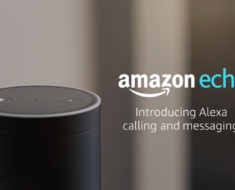AT&T originally announced the LTE-M programmable button last November. Recently, the company announced immediate availability for the product. A programmable button like this comes with numerous uses, and AT&T’s product is geared toward businesses. LTE-M buttons share similarities with Amazon’s Dash buttons. With a reasonable price tag, these programmable buttons might prove popular with business customers. Initial orders of the LTE-M button come at a discount, so businesses may want to act now and place an order.
What Is The LTE-M Programmable Button?
LTE-M buttons run off the IoT 1-Click service from Amazon Web Services. Therefore, companies can utilize the buttons to let customers place orders. Other use cases include providing alerts or notifications and receiving feedback from customers. The LTE-M button is essentially a business-focused Dash button. It even features similar usage limits of 1,500 clicks across a maximum of three years. Unlike Dash buttons, LTE-M buttons are empowered with more features and customization options to suit a company’s needs.
What Does Pricing Look Like For Businesses?
For each LTE-M order, AT&T allows businesses to customize the label on the button. A 500-unit minimum order is required, costing nearly $15,000 per order. AT&T is offering the first 5,000 units of the LTE-M button for $29.99 per unit. After the initial 5,000 units, the price increases to $35 per unit. Early adopters stand to save a noticeable amount of money by ordering sooner rather than later. It remains to be seen how high demand is for the LTE-M programmable button, although multiple companies have expressed interest.
Always Connected Thanks To The LTE-M Network
AT&T designed the LTE-M button to function on its LTE-M network, reveals engadget.com. The network functions across most of AT&T’s existing network. For that reason, companies never have to worry about providing an internet connection to their programmable buttons. LTE-M is specifically designed for connected Internet of Things devices. This specialized network ensures the best performance and a consistent connection for IoT devices. Fortunately, LTE-M usage doesn’t lead to congestion on AT&T’s main network.
Depending on the true capabilities of the LTE-M button, AT&T could have a popular commercial product on its hands. The bar for success will be measured by how quickly AT&T can sell its first 5,000 units and whether interest remains high afterward. Programmable buttons come with a wide variety of use cases. As more companies receive LTE-M buttons, their true capabilities and limitations will come to light.
Dil Bole Oberoi





